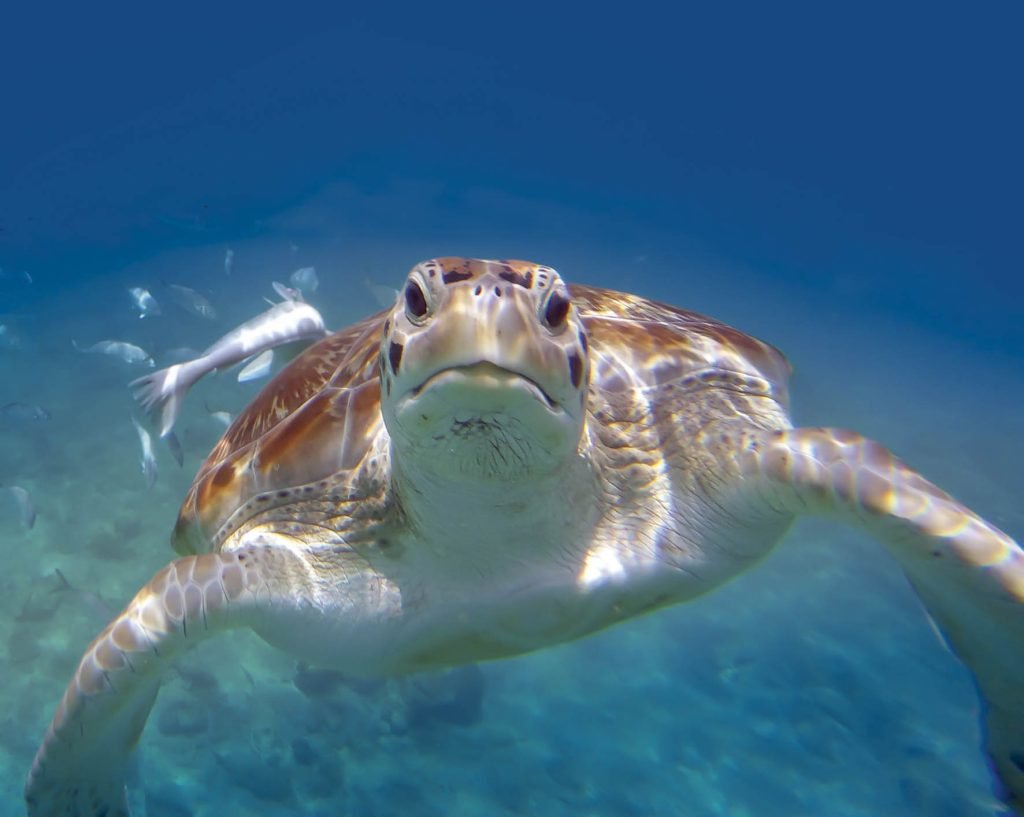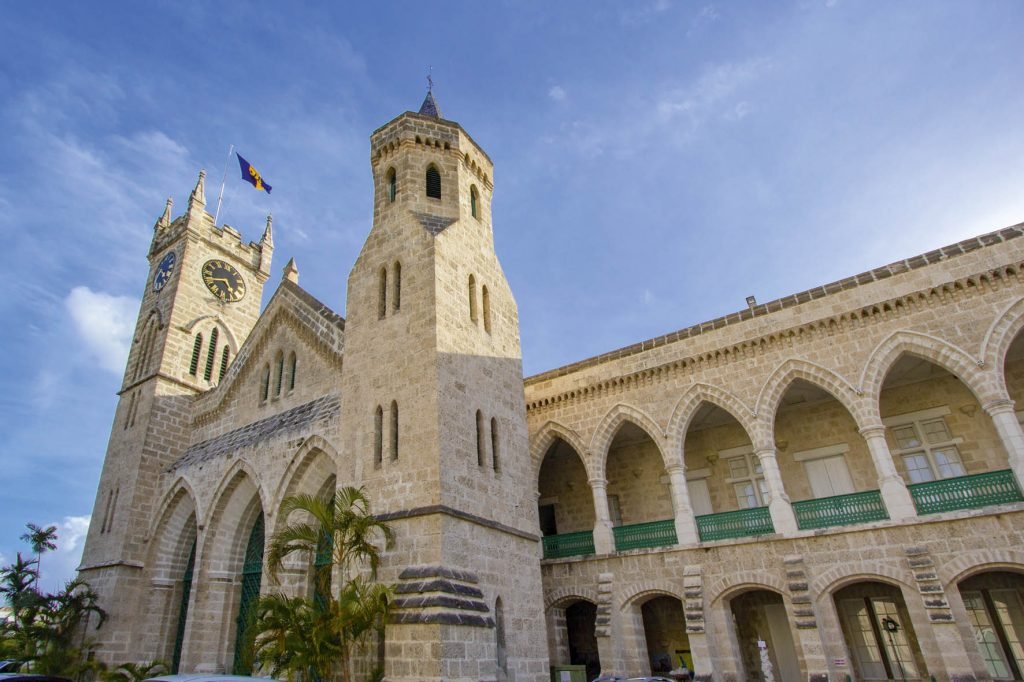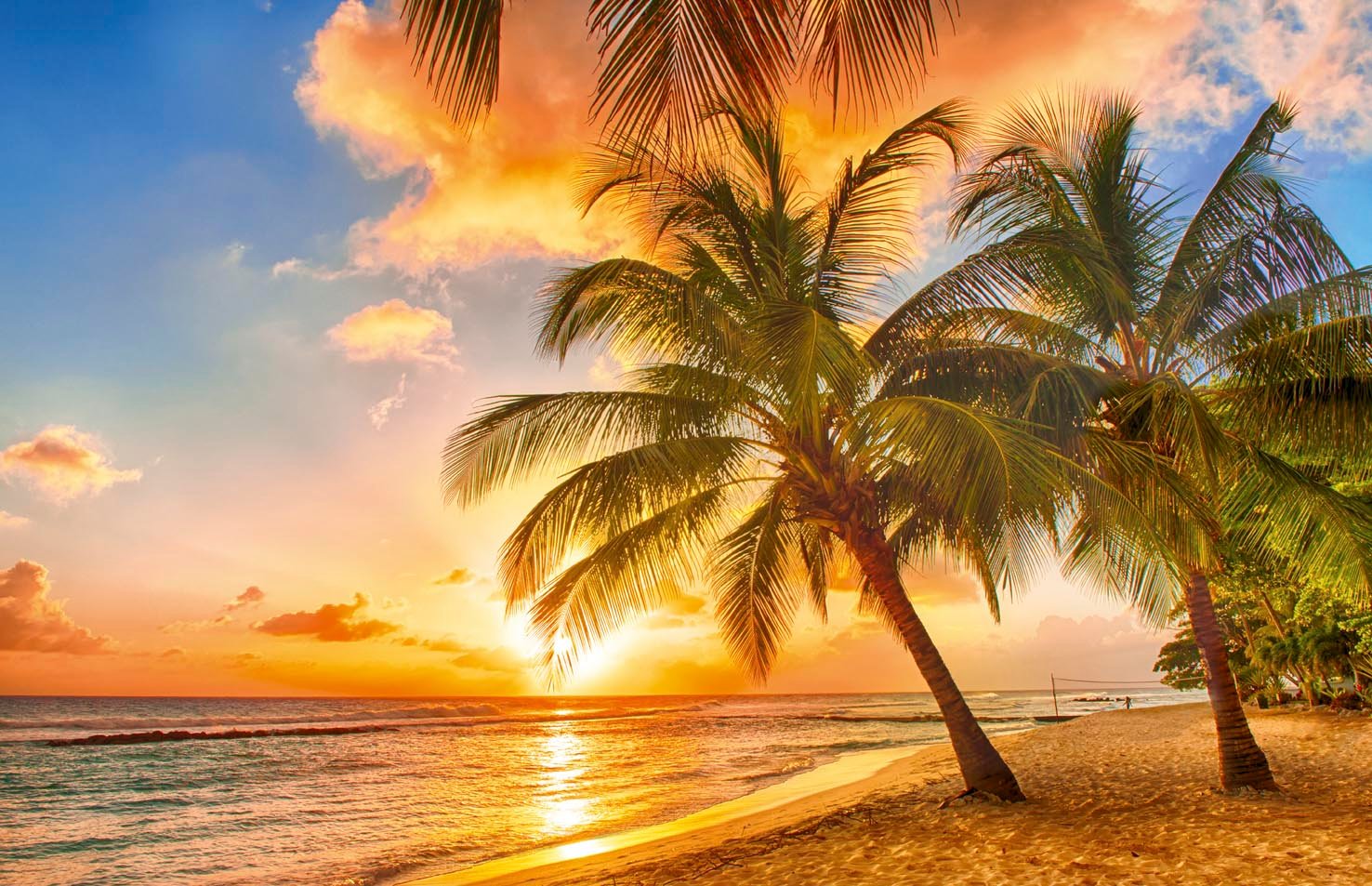
Barbados… Only in Barbados
By: Mónica del Pilar Uribe Marín
Photos: Demian Colman
The mile-long walk through the Saint Lawrence neighborhood on the south coast of Barbados was my first encounter with what was once known as “British America.” I was amazed by the neighborhood streets, which flow into a main avenue lined with nightclubs, restaurants, shops, and even hostels, and the unique, colorful nightlife awash in the echo of the ocean waves.
I arrived in Barbados in the afternoon. The sun beat down relentlessly as I made my way to my hotel and I paid little attention to the sweeping landscapes of exuberant foliage dotted with rustic dwellings. My local driver spoke little but was friendly and smiling. He exemplified what I later learned was the typical Barbadian’s paradoxical mixture of British and African roots, reflected in their daily lives, customs, and traditions.

Shortly before midnight he drove us to Saint Lawrence Gap (“The Gap”), where several of his countrymen were anxious to introduce us to the seafood specialties of a chef who ran his own restaurant. As our trip progressed, we realized that in Barbados one eats very well, rich or poor, tourist or a local, because the islanders have access to everything required for wonderful cuisine: fruits, fish, vegetables, and local talent. That night was the beginning of a trip filled with pleasant discoveries, one of which happened the following day.
After tasting the very popular flying fish, golden brown and seasoned with exquisite Bajan seasonings, we walked through the streets past rum shops selling the national drink. There are thousands of these wooden structures scattered across the island and locals like to jest that you’ll find one next to every church.

Suddenly we heard a loud wooden bang followed by other similar sounds and enthusiastic shouting. The normally quiet game of dominoes is played here in a friendly but boisterous and somewhat theatrical way. The banging was the sound of the dominoes as they slammed against the table. As we traveled, we found that this style of play was all over the island, whether games happened under a tree, at the table after eating, or anywhere else.
This is the real Barbados: one of the thirteen Antillean island nations and one of the world’s smallest countries, with a population of 287,000 people living on 166 square miles. Residents earn a living from fishing, agriculture, tourism, and the hotel and construction industries. The cement factories seen in various parts of the island attest to the latter.

I spotted one of these factories from the catamaran that we boarded one morning in the port of Bridgetown. The five-hour trip immersed us in the beauty of this island, framed by the Eastern Caribbean and the western Atlantic Ocean, and allowed us to take in the soft sands and gaze through crystal-clear waters at turtles of different sizes. We were invited to swim with them, to get an idea of why Barbadians insist on protecting them. We later spotted billboards throughout the city advertising an emergency hotline to report nest sightings or turtles seen crossing the road after becoming confused by the city lights.
I saw one such sign while walking along Carlisle Bay, a small natural harbor on the island’s southwest side, where the capital city of Bridgetown is located. Bridgetown is the country’s largest city and home to most businesses and more than 100,000 people. The sign was posted on the wall of one of the tidy public bathrooms found throughout the city.
I followed a path running parallel to the beach and the turquoise waters and saw people from nearby offices seated on rocks having lunch or taking a nap. I saw children and parents walking on the sand, splashing in the sea, and eating in the seaside restaurants. It surprised me that the locals enjoyed the same beaches as tourists, until I realized that all of the island’s beaches are public, even those bordering the hotels.

The following day, our tour wound through lush and varied vegetation that included palm and fruit trees and then took us past sugarcane plantations, distilleries, and coral reefs, and down streets and alleys lined with lavish or more modest buildings. At one point we headed into the neighborhoods, where I experienced the genuine warmth and kindness that Barbadians share with each other and with tourists. I could sense the strong bonds between children, parents, and grandparents and felt their joy and optimism.
I visited the so-called chattel houses, the name given to the movable wooden houses generally occupied by the working class. The houses stand one next to the other and date back to plantation days, when the slaves who owned them –but not the land under them– often had to disassemble and move them from place to place. Much cheaper than cement houses, which are often set apart from chattel houses, they are painted in bright colors and neighbors gather on the porches to drink rum or chat.

There is life and rhythm everywhere, as I notice on Westbury New Road, now christened Rihanna Drive, where the famous singer spent her childhood, barefoot and on her bicycle.
Along another street, we “stumbled” upon a 10×32-foot table drawn on the pavement. A cross between a tennis court and ping pong table, it had an eight-inch gap in the space usually reserved for the net. Two islanders holding large wooden rackets slapped a “bald” tennis ball back and forth across the “table.”
One of the neighbors, who applauded every shot, explained to me that this was called road tennis, a popular Bajan sport that emerged in the 30s when the island’s poor had neither the space nor the money to play lawn tennis. There are thousands of courts on the island and everyone plays, regardless of sex, age, race, religion, or social class.
And here the word Bajan acquires real meaning; it defines a lifestyle, an idiosyncrasy, and refers to a dialect that combines British and West African English and the two cultures that began their historical fusion centuries ago.

In 1625, Englishman John Powell arrived on the island and, finding it uninhabited, claimed it on behalf of King James I of England. Two years later, close to a hundred Englishmen and ten enslaved African people arrived at the spot now known as Holetown. Historians confirm the presence of indigenous tribes such as the Arawak and the Carib peoples, who were on the island before the Spanish passed through without settling. The Portuguese arrived next, but didn’t stay either, although they christened the island Barbados, inspired by the “barbed” shape of the fig trees growing there.
From that time until 1966, the island remained a British colony, too long to avoid Anglo-Saxon culture from creeping into the blood of the island’s African descendants, although African culture remains strong. You can feel it in the joy and familiar warmth of the hardworking, ingenious people, in certain conservative practices, such as attending church in formal dress, in the islander’s ability to create a prosperous business out of nothing, in the way they care for the environment, and their pride in the island, where 97% of the inhabitants have African roots and the rest are British, European, East Indian, Asian, or Middle Eastern.

The English contributed their language, colonial architecture (visible in Bridgetown’s Trafalgar Square and Victorian-style buildings), their systems of measurement and social security, left-side driving, Parliament, two Chambers, and a Primer Minister, the Anglican religion, and Queen Elizabeth II’s monarchy (while remaining politically independent), as well as sports such as polo, golf, cricket, and horse races.
Bajans have cricket in their soul and it is the national sport. I realized this when I spotted a statue of Sir Garfield Sobers, the best cricketer in the world. The Bajan hero is still alive and his monument is one of ten statues celebrating some of Barbados’ greatest heroes.
Indeed, the prosperous nation of Barbados, a former British colony with African heritage, enjoys a system of roads that are almost all paved, universal healthcare, limited government corruption, free education for children and youth, and a thriving tourism industry that generates most of the nation’s economy.

Tourism, rum, and a bit of agriculture. I can see it, and feel it. There’s so much to see, so much to tell… Paradise indeed!
How to Get There
Copa Airlines offers two flights a week to and from Bridgetown (Barbados), from North, Central, and South America and the Caribbean through its Hub of the Americas in Panama City.



